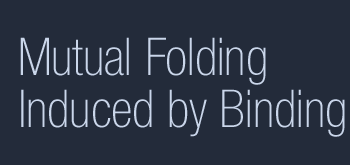



Database accession: MF7000702
Name: Mouse GAS7cb
PDB ID: 6iko
Experimental method: X-ray (3.76 Å)
Assembly: Homodimer
Source organism: Mus musculus
Primary publication of the structure:
Hanawa-Suetsugu K, Itoh Y, Ab Fatah M, Nishimura T, Takemura K, Takeshita K, Kubota S, Miyazaki N, Wan Mohamad Noor WNI, Inaba T, Nguyen NTH, Hamada-Nakahara S, Oono-Yakura K, Tachikawa M, Iwasaki K, Kohda D, Yamamoto M, Kitao A, Shimada A, Suetsugu S
Phagocytosis is mediated by two-dimensional assemblies of the F-BAR protein GAS7.
(2019) Nat Commun 10: 4763
PMID: 31628328
Abstract:
Phagocytosis is a cellular process for internalization of micron-sized large particles including pathogens. The Bin-Amphiphysin-Rvs167 (BAR) domain proteins, including the FCH-BAR (F-BAR) domain proteins, impose specific morphologies on lipid membranes. Most BAR domain proteins are thought to form membrane invaginations or protrusions by assembling into helical submicron-diameter filaments, such as on clathrin-coated pits, caveolae, and filopodia. However, the mechanism by which BAR domain proteins assemble into micron-scale phagocytic cups was unclear. Here, we show that the two-dimensional sheet-like assembly of Growth Arrest-Specific 7 (GAS7) plays a critical role in phagocytic cup formation in macrophages. GAS7 has the F-BAR domain that possesses unique hydrophilic loops for two-dimensional sheet formation on flat membranes. Super-resolution microscopy reveals the similar assemblies of GAS7 on phagocytic cups and liposomes. The mutations of the loops abolishes both the membrane localization of GAS7 and phagocytosis. Thus, the sheet-like assembly of GAS7 plays a significant role in phagocytosis.
 Annotations from the GeneOntology database. Only terms that fit at least two of the interacting proteins are shown.
Annotations from the GeneOntology database. Only terms that fit at least two of the interacting proteins are shown. Molecular function:
actin filament binding  actin filament binding
actin filament binding
Biological process:
actin filament bundle assembly  actin filament bundle assembly
actin filament bundle assembly
actin filament polymerization  actin filament polymerization
actin filament polymerization
neuron differentiation  neuron differentiation
neuron differentiation
neuron projection morphogenesis  neuron projection morphogenesis
neuron projection morphogenesis
regulation of cell shape  regulation of cell shape
regulation of cell shape
Cellular component:
actin filament  actin filament
actin filament
cytoplasm  cytoplasm
cytoplasm
plasma membrane  plasma membrane
plasma membrane
ruffle  ruffle
ruffle
 Structural annotations of the participating protein chains.
Structural annotations of the participating protein chains.Entry contents: 2 distinct polypeptide molecules
Chains: A, B
Notes: All chains according to the most probable oligomerization state stored in PDBe were considered.
Number of unique protein segments: 1
Name: Growth arrest-specific protein 7
Source organism: Mus musculus
Length: 421 residues
Sequence: Sequence according to the corresponding UniProt protein segmentMATALQKPGMVPPPPGEESQTVILPPGWHSYLSPQGRRYYVNTTTNETTWERPSSSPGISASPAPHRSSLPTTVNGYHASGTPAHPPETAHMSLRKSTGDSQNLGSSSPGRKQSKENTITINCVTFPHPDTMPEQQLLKPTEWSYCDYFWADKKDPQGNGTVAGFELLLQKQLKGKQMQKEMSEFIRERIKIEEEYAKNLAKLSQNSLAAQEEGSLGEAWAQVKKSLADEAEVHLKFSAKLHSEVEKPLMNFRENFKKDMKKCDHHIADLRKQLASRYASVEKARKALTERQKDLEMKTQQLEIKLSNKTEEDIKKARRKSTQAGDDLMRCVDLYNQAQSKWFEEMVTTTLELERLEVERVEMIRQHLCQYTQLRHETDMFNQSTVEPVDQLLRKVDPAKDRELWVREHKTGNIRPVDMEI
Sequence according to the corresponding UniProt protein segmentMATALQKPGMVPPPPGEESQTVILPPGWHSYLSPQGRRYYVNTTTNETTWERPSSSPGISASPAPHRSSLPTTVNGYHASGTPAHPPETAHMSLRKSTGDSQNLGSSSPGRKQSKENTITINCVTFPHPDTMPEQQLLKPTEWSYCDYFWADKKDPQGNGTVAGFELLLQKQLKGKQMQKEMSEFIRERIKIEEEYAKNLAKLSQNSLAAQEEGSLGEAWAQVKKSLADEAEVHLKFSAKLHSEVEKPLMNFRENFKKDMKKCDHHIADLRKQLASRYASVEKARKALTERQKDLEMKTQQLEIKLSNKTEEDIKKARRKSTQAGDDLMRCVDLYNQAQSKWFEEMVTTTLELERLEVERVEMIRQHLCQYTQLRHETDMFNQSTVEPVDQLLRKVDPAKDRELWVREHKTGNIRPVDMEI
UniProtKB AC: Q60780 (positions: 117-419)
Coverage: 71%
Name: Growth arrest-specific protein 7
Source organism: Mus musculus
Length: 421 residues
Sequence: Sequence according to the corresponding UniProt protein segmentMATALQKPGMVPPPPGEESQTVILPPGWHSYLSPQGRRYYVNTTTNETTWERPSSSPGISASPAPHRSSLPTTVNGYHASGTPAHPPETAHMSLRKSTGDSQNLGSSSPGRKQSKENTITINCVTFPHPDTMPEQQLLKPTEWSYCDYFWADKKDPQGNGTVAGFELLLQKQLKGKQMQKEMSEFIRERIKIEEEYAKNLAKLSQNSLAAQEEGSLGEAWAQVKKSLADEAEVHLKFSAKLHSEVEKPLMNFRENFKKDMKKCDHHIADLRKQLASRYASVEKARKALTERQKDLEMKTQQLEIKLSNKTEEDIKKARRKSTQAGDDLMRCVDLYNQAQSKWFEEMVTTTLELERLEVERVEMIRQHLCQYTQLRHETDMFNQSTVEPVDQLLRKVDPAKDRELWVREHKTGNIRPVDMEI
Sequence according to the corresponding UniProt protein segmentMATALQKPGMVPPPPGEESQTVILPPGWHSYLSPQGRRYYVNTTTNETTWERPSSSPGISASPAPHRSSLPTTVNGYHASGTPAHPPETAHMSLRKSTGDSQNLGSSSPGRKQSKENTITINCVTFPHPDTMPEQQLLKPTEWSYCDYFWADKKDPQGNGTVAGFELLLQKQLKGKQMQKEMSEFIRERIKIEEEYAKNLAKLSQNSLAAQEEGSLGEAWAQVKKSLADEAEVHLKFSAKLHSEVEKPLMNFRENFKKDMKKCDHHIADLRKQLASRYASVEKARKALTERQKDLEMKTQQLEIKLSNKTEEDIKKARRKSTQAGDDLMRCVDLYNQAQSKWFEEMVTTTLELERLEVERVEMIRQHLCQYTQLRHETDMFNQSTVEPVDQLLRKVDPAKDRELWVREHKTGNIRPVDMEI
UniProtKB AC: Q60780 (positions: 118-420)
Coverage: 71%
 Evidence demonstrating that the participating proteins are unstructured prior to the interaction and their folding is coupled to binding.
Evidence demonstrating that the participating proteins are unstructured prior to the interaction and their folding is coupled to binding. Representative domain in related structures: F-BAR domain
Evidence level: Direct evidence
Evidence coverage: The full structure participates in mutual synergistic folding.
Complex Evidence:
F-BAR domains form an intimately packed six-helix bundle and bury a large, hydrophobic dimerization interface. They exist as dimers in solution, with no evidence for monomeric forms (PMID:17512409). Other BAR domains (N-BAR) displayed a two-state equilibrium unfolding (PMID:26368922, PMID:34423187).
Chain A:
N/A
Chain B:
N/A
Surface and contacts features:
 Structures from the PDB that contain the same number of proteins, and the proteins from the two structures show a sufficient degree of pairwise similarity, i.e. they belong to the same UniRef90 cluster (the full proteins exhibit at least 90% sequence identity) and convey roughly the same region to their respective interactions (the two regions from the two proteins share a minimum of 70% overlap).
Structures from the PDB that contain the same number of proteins, and the proteins from the two structures show a sufficient degree of pairwise similarity, i.e. they belong to the same UniRef90 cluster (the full proteins exhibit at least 90% sequence identity) and convey roughly the same region to their respective interactions (the two regions from the two proteins share a minimum of 70% overlap). Download the CIF file (.cif)
Download this entry's XML file (.xml)
Download this entry's JSON file (.json)
